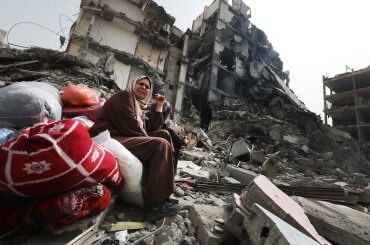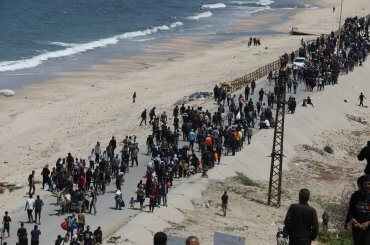Weird that the NY Times does a long piece from Moscow about a 400-acre outdoor flea market that has been shut down lately because of alleged health code violations, though more likely for the market’s owner’s political/cultural battle with Vladimir Putin–
The trouble in this case was that the market’s owner, Telman Ismailov, who had made billions of dollars as Cherkizovsky evolved from a mere flea market into an industrial-scale distribution hub for Chinese imports during the oil boom, had violated unwritten codes of business conduct that put him at odds with Mr. Putin, according to analysts and Russian news reports.
and leaves out the Jewish angle.
This Jewish-chauvinist blogger identifies Ismailov as a Jewish oligarch. Wikipedia says Ismailov is a "mountain Jew" of Azerbaijan. This Russian blogger identifies him as vice chairman of the Eurasian Jewish Congress and says Eurasian Jews have come out in his defense. Jeff Blankfort, who passed this along, says: "Here’s a classic example of the NYT providing protective cover for Jews when to identify an important individual as such might reflect badly on the tribe. Telman Ismailov, the Russian Jewish oligarch described in this article is considered a godfather in the Russian Jewish community and is vice chair of the Eurasian Jewish Congress. His Jewish identity, given that this is Russia where it seems every oligarch is Jewish and not only Jewish but ostentatiously rich and tasteless, is not an unimportant part of the story but the NY Times never lets its readers know that. Why?"
The answer, I think, isn’t strictly tribal vanity, but that Jews are enormously apprehensive about talking about Jewish economic power. This was a key part of the Jewish Question that Herzl was dealing with 110 years ago; he knew it to be a source of anti-Semitism. And his own editors refused to cover his answer, The Jewish State. This talk makes Jews apprehensive. Not me, cause I think we’re supposed to be journalists and history doesn’t repeat itself. NYT reporter Andrew Kramer sure hit the ethnic angle, by the way:
It was also a workplace for about 50,000 Chinese immigrants and had coalesced into a center of northeastern Chinese culture, according to Mr. Popov, the Chinese expert at the Russian Academy of Sciences. The other main ethnic groups were Azerbaijanis, Tajiks, Vietnamese and smaller numbers of Afghans and North Koreans. In all, the Russian Federation of Migrants, a nonprofit group, estimated that 100,000 people worked there.

